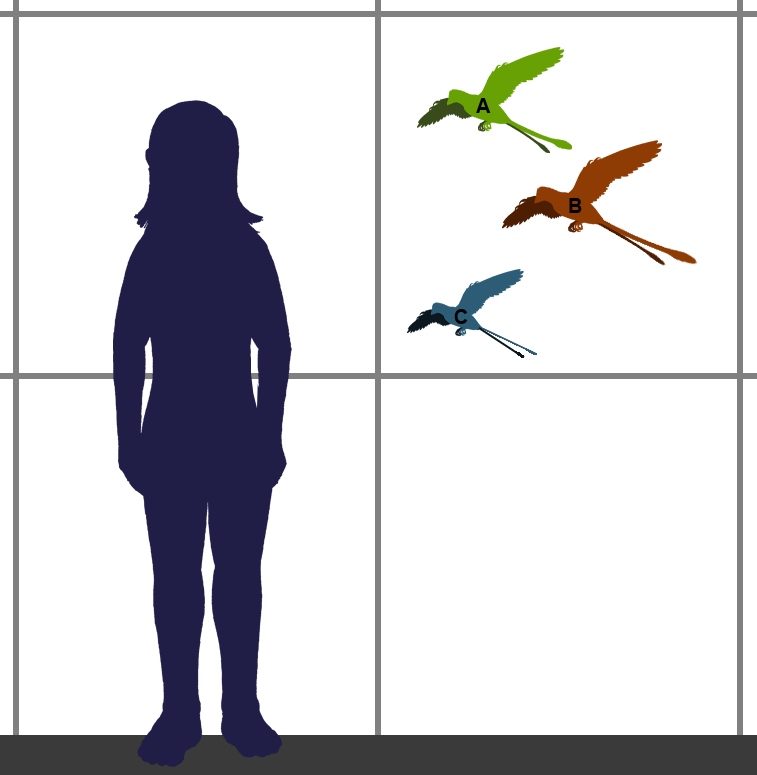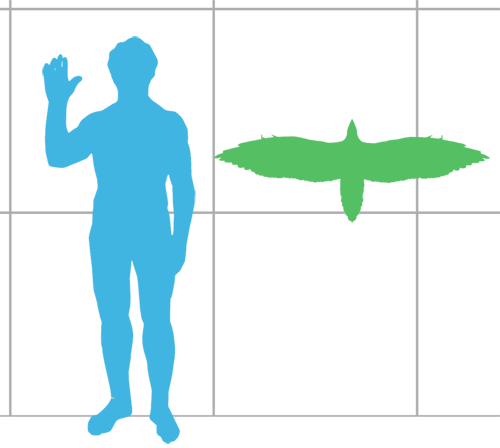|
Pygostylia
Pygostylia is a group of avialans which includes the Confuciusornithidae and all of the more advanced species, the Ornithothoraces. Definition The group Pygostylia was intended to encompass all avialans with a short, stubby tail, as opposed to the longer, unfused tails of more primitive species like ''Archaeopteryx lithographica''. It was named by Sankar Chatterjee in 1997.Chatterjee, S. 1997. ''The Rise of Birds.'' Baltimore: Johns Hopkins University Press. 312 pp. Luis Chiappe later defined Pygostylia as a node-based clade, "the common ancestor of the Confuciusornithidae and Neornithes plus all its descendants". In 2001, Jacques Gauthier and Kevin de Queiroz recommended that Chatterjee's original apomorphy-based clade concept be used instead of Chiappe's node-based definition,Gauthier, J., & De Queiroz, K. (2001). Feathered dinosaurs, flying dinosaurs, crown dinosaurs, and the name" Aves. ''New perspectives on the origin and early evolution of birds'', 7-41. but this reco ... [...More Info...] [...Related Items...] OR: [Wikipedia] [Google] [Baidu] |
Chongmingia
''Chongmingia'' is a genus of basal Avialae, avialan belonging to Pygostylia that lived during the Aptian. It was found in the Jiufotang Formation in Chaoyang, Liaoning, Chaoyang, China, and was described by Wang ''et al''., 2016. The name comes from the word ''Chongming'', referring to a Chinese mythological bird, and the specific epithet is in honor of Mr. Xiaoting Zheng. Taxonomy The species was first described in 2015; the description appeared in the pages of ''Scientific Reports''. Only the holotype, extracted from the Jehol Biota sediments from the Early Cretaceous period in north-east China, was discovered. ''Chongmingia zhengi'' represents a developmental line unknown at the time of description, it illustrates the diversity of traits in contemporary birds. The ''furcula'' in ''C. zhengi'' was stiff, which indicates their poor performance and the need to use more force on the fly. On the other hand, the relatively long forelimb and well-developed chest and shoulder Keel (bi ... [...More Info...] [...Related Items...] OR: [Wikipedia] [Google] [Baidu] |
Jinguofortis
''Jinguofortis'' is a genus of primitive avialan belonging to the clade Pygostylia that lived during the Valanginian stage of the Early Cretaceous. It was found in the Dabeigou Formation in northeastern China, and isotope dating from the samples overlying the bird-bearing horizon is 127 million years ago. Description ''Jinguofortis'' is notable for having a combination of primitive and advanced traits. Some of these are typical of stemward avialans (further from modern birds) while others occur in crownward avialans (closer to modern birds). The scapula and coracoid bones of the shoulder girdle are fused into a single bone, the scapulocoracoid. A fused scapulocoracoid is a plesiomorphic (primitive) feature which is not present in modern birds. This plesiomorphic state is found in pterosaurs and non-avian dinosaurs, including coelurosaurian theropods ancestral to birds. However, these bones become unfused in the famed early avialan ''Archaeopteryx'', and in more crownward avian ... [...More Info...] [...Related Items...] OR: [Wikipedia] [Google] [Baidu] |
Cratonavis
''Cratonavis'' (meaning "Craton bird") is an extinct genus of pygostylian avialian from the Early Cretaceous Jiufotang Formation of Liaoning Province, China. The genus contains a single species, ''C. zhui'', known from a complete skeleton. Discovery and naming The holotype specimen, IVPP V31106, was discovered in sediments of the Jiufotang Formation, dated to the Aptian age of the early Cretaceous period, near the Xiaotaizi village, (Jianchang County) of Liaoning Province, northeastern China. This specimen consists of a complete, articulated individual with preserved feathers. In 2023, Li Zhiheng, Wang Min, Thomas A. Stidham, and Zhou Zhonghe described ''Cratonavis zhui'', a new genus and species of jinguofortisid, based on these fossil remains. The generic name, "''Cratonavis''", combines a reference to the North China Craton with the Latin word "avis", meaning "bird". The specific name, "''zhui''", honors the Chinese geologist Zhu Rixiang, who has studied the destru ... [...More Info...] [...Related Items...] OR: [Wikipedia] [Google] [Baidu] |
Jinguofortisidae
Jinguofortisidae is an extinct family of early pygostylian dinosaurs known from the Early Cretaceous. They were found in northern China. Description The Jinguofortisidae are distinguished from other non- ornithothoracine avialans by the following features: the scapula and coracoid fused into a scapulocoracoid; a boomeranged-shaped furcula without a hypocleidium; proximal margin of humerus concave centrally; deltopectoral crest large and not perforated; minor metacarpal markedly bowed caudally; alular digit terminating at the level of the distal end of major metacarpal; and proximal phalanx of the major digit longer than the intermediate phalanx. Phylogeny Wang et al. (2018) erected Jinguofortisidae after finding ''Chongmingia'' (previously considered Avebrevicauda ''incertae sedis'' by Wang et al. 2016) to be sister to their new taxon ''Jinguofortis''. In 2023, a third jinguofortisid was described by Li ''et al''. They recovered their new taxon, '' Cratonavis'', as the sister ... [...More Info...] [...Related Items...] OR: [Wikipedia] [Google] [Baidu] |
Ornithuromorpha
Euornithes (from Greek ' meaning "true birds") is a natural group which includes the most recent common ancestor of all avialans closer to modern birds than to the enantiornithines. This group was defined in the ''PhyloCode'' by Juan Benito and colleagues in 2022 as "the largest clade containing '' Vultur gryphus'', but not '' Enantiornis leali'' and '' Cathayornis yandica''". Description Clarke ''et al''. (2006) found that the most primitive known euornithians (the Yanornithiformes) had a mosaic of advanced and primitive features. These species retained primitive features like gastralia and a pubic symphysis. They also showed the first fully modern pygostyles, and the type specimen of ''Yixianornis'' (IVPP 13631) preserves eight elongated rectrices (tail feathers) in a modern arrangement. No earlier pygostylians are known which preserve a fan of tail feathers of this sort; instead, they showed only paired plumes or a tuft of short feathers. Classification The name Euornithes ... [...More Info...] [...Related Items...] OR: [Wikipedia] [Google] [Baidu] |
Confuciusornithidae
Confuciusornithidae is an extinct family of pygostylian avialans known from the Early Cretaceous, found in northern China. They are commonly placed as a sister group to Ornithothoraces, a group that contains all extant birds along with their closest extinct relatives. Confuciusornithidae contains four genera, possessing both shafted and non-shafted (downy) feathers. Some specimens probably referable to this clade represents one of the earliest known fossil evidence of primary feather moulting. They are also noted for their distinctive pair of ribbon-like tail feathers of disputed function. The wing anatomy of confuciusornithids suggests an unusual flight behavior, due to anatomy that implies conflicting abilities. They possessed feathers similar to those of fast-flapping birds, which rely on quick flapping of their wings to stay aloft. At the same time, their wing anatomy also suggests a lack of flapping ability. Confuciusornithids are also noted for their beak and lack of teeth, ... [...More Info...] [...Related Items...] OR: [Wikipedia] [Google] [Baidu] |
Confuciusornithiformes
Confuciusornithidae is an extinct family of pygostylian avialans known from the Early Cretaceous, found in northern China. They are commonly placed as a sister group to Ornithothoraces, a group that contains all extant birds along with their closest extinct relatives. Confuciusornithidae contains four genera, possessing both shafted and non-shafted (downy) feathers. Some specimens probably referable to this clade represents one of the earliest known fossil evidence of primary feather moulting. They are also noted for their distinctive pair of ribbon-like tail feathers of disputed function. The wing anatomy of confuciusornithids suggests an unusual flight behavior, due to anatomy that implies conflicting abilities. They possessed feathers similar to those of fast-flapping birds, which rely on quick flapping of their wings to stay aloft. At the same time, their wing anatomy also suggests a lack of flapping ability. Confuciusornithids are also noted for their beak and lack of teeth, s ... [...More Info...] [...Related Items...] OR: [Wikipedia] [Google] [Baidu] |
Jeholornis
''Jeholornis'' (meaning "Jehol bird") is a genus of avialan dinosaurs that lived between approximately 122 and 120 million years ago during the early Cretaceous Period in China. Fossil ''Jeholornis'' were first discovered in the Jiufotang Formation in Hebei Province, China (in what was previously Rehe Province, also known as Jehol—hence the name) and additional specimens have been found in the older Yixian Formation. ''Jeholornis'' had long tails and few small teeth, and were approximately the size of turkeys,Holtz, Thomas R. Jr. (2008) ''Dinosaurs: The Most Complete, Up-to-Date Encyclopedia for Dinosaur Lovers of All Ages'Supplementary Information/ref> making them among the largest avialans known until the Late Cretaceous. Their diet included seeds of cycads, ''Ginkgo'' or similar plants. Description ''Jeholornis'' were relatively large, basal avialans, with a maximum adult length of up to 75 cm (2.5 ft) and an estimated weight of 2.27-9.1 kg (5-20 lbs). ... [...More Info...] [...Related Items...] OR: [Wikipedia] [Google] [Baidu] |
Phylogenetic Analyses
In biology, phylogenetics () is the study of the evolutionary history of life using observable characteristics of organisms (or genes), which is known as Computational phylogenetics, phylogenetic inference. It infers the relationship among organisms based on empirical data and observed heritable traits of DNA sequences, protein amino acid sequences, and Morphology (biology), morphology. The results are a phylogenetic tree—a diagram depicting the hypothesis, hypothetical relationships among the organisms, reflecting their inferred evolutionary history. The tips of a phylogenetic tree represent the observed entities, which can be living Taxon, taxa or fossils. A phylogenetic diagram can be rooted or unrooted. A rooted tree diagram indicates the hypothetical common ancestor of the taxa represented on the tree. An unrooted tree diagram (a network) makes no assumption about directionality of character state transformation, and does not show the origin or "root" of the taxa in questi ... [...More Info...] [...Related Items...] OR: [Wikipedia] [Google] [Baidu] |
Sapeornis
''Sapeornis'' is a monotypic genus of avialan dinosaurs which lived during the early Cretaceous period ( late Barremian to early Aptian, roughly 125-120 mya). ''Sapeornis'' contains only one species, ''Sapeornis chaoyangensis''. Description ''Sapeornis'' was large for an early avialan, about long in life, excluding the tail feathers. The hand of ''Sapeornis'' was far more derived than that of '' Archaeopteryx''. It had three fingers, the outer ones with two and the middle one with three phalanges, and a well-fused carpometacarpus. Its arms were about half again as long as the legs, suggesting a large wing area. On the other hand, its shoulder girdle was apparently ill-adapted to flapping flight and its furcula was unusual, with a hypocleidum similar to more advanced avialans but a general anatomy even more basal than in ''Archaeopteryx''. The humerus was large and bore holes, apparently to save weight, as in the Confuciusornithidae. The skull has a handful of teeth in t ... [...More Info...] [...Related Items...] OR: [Wikipedia] [Google] [Baidu] |
Early Cretaceous
The Early Cretaceous (geochronology, geochronological name) or the Lower Cretaceous (chronostratigraphy, chronostratigraphic name) is the earlier or lower of the two major divisions of the Cretaceous. It is usually considered to stretch from 143.1 Megaannum#SI prefix multipliers, Ma to 100.5 Ma. Geology Proposals for the exact age of the Barremian–Aptian boundary ranged from 126 to 117 Ma until recently (as of 2019), but based on drillholes in Svalbard the defining Anoxic event#Cretaceous, early Aptian Oceanic Anoxic Event 1a (OAE1a) was dated to 123.1±0.3 Ma, limiting the possible range for the boundary to c. 122–121 Ma. There is a possible link between this anoxic event and a series of Early Cretaceous large igneous provinces (LIP). The Ontong Java Plateau, Ontong Java-Manihiki Plateau, Manihiki-Hikurangi Plateau, Hikurangi large igneous province, emplaced in the South Pacific at c. 120 Ma, is by far the largest LIP in Earth's history. The Onto ... [...More Info...] [...Related Items...] OR: [Wikipedia] [Google] [Baidu] |







